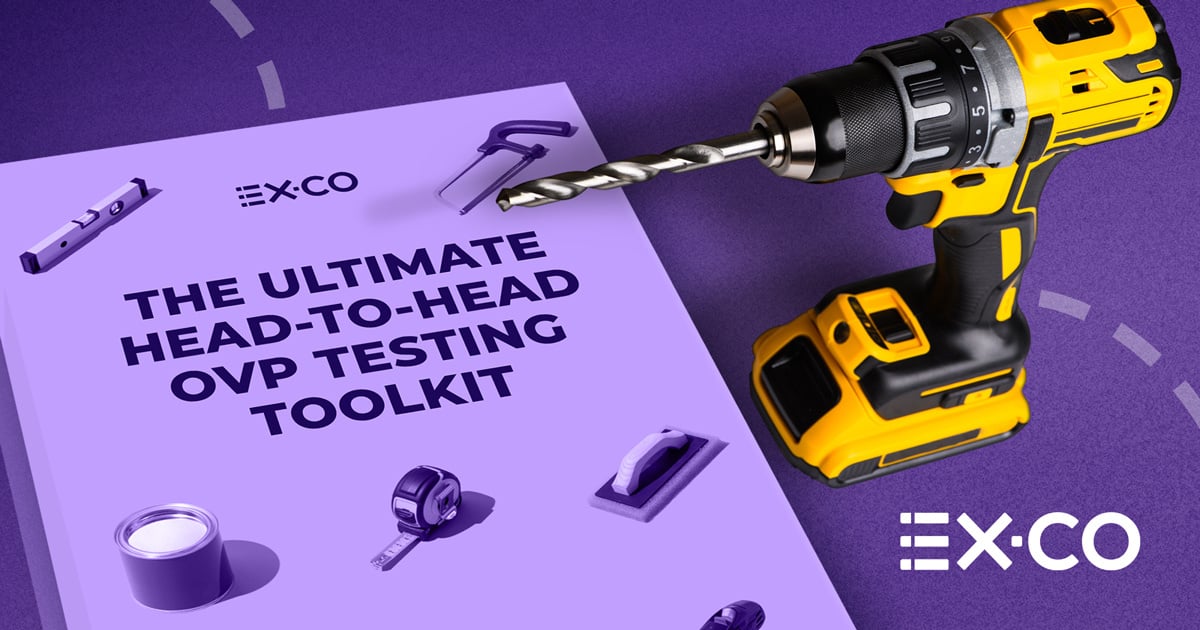For online publishers, video monetization has entered a new era of complexity and opportunity. As traditional TV advertising budgets rapidly migrate to digital channels, the pressure to quickly implement or switch online video platforms (OVPs) has never been higher. For many publishers, a single video player can represent as much as 25% of page revenue.
But, like a rushed construction job built with cheap tools, hasty video platform decisions can often lead to a costly rebuild months later. Worse, a poor implementation can inflict long-term damage that far outweighs any short-term gains.
Before embarking on your next head-to-head OVP test, consider these battle-tested insights and frameworks that other publishers have used to drive successful evaluations.
Why Quick OVP Tests Quickly Break Down
Often there are valid business concerns for attempting a quick technology decision. Perhaps an existing vendor is underperforming, or new market opportunities require rapid action around new features, integrations, or new media formats (like vertical video). But, too many publishers are letting these pressures lead them to cut corners during platform evaluation.
Despite a growing industry focus on competitive bake-offs, the vast majority of video tests fail today. This is evident in a recent industry report by The Rebooting called “The State of Publisher Video Strategies”: While 80% of publishers have embraced video as a core part of their digital strategy, only 23% rate their video experience as "good" or better.
Rushed OVP platform decisions can also have long-term impacts. More than a dip in monthly revenue, or a headache for IT teams, a faulty video platform can hurt your site’s technical health and inventory quality scores – turning a misstep into a potentially fatal error.
An OVP Cautionary Tale: Building on Shaky Ground
Consider one major news publisher's costly lesson in rushing the evaluation process. Eager to boost video revenue, they compressed what should have been a thorough platform evaluation into a mere two weeks. The initial results seemed promising – revenue numbers climbed, and the new vendor appeared to be outperforming their previous OVP solution significantly.
However, those early gains came at a devastating cost. The winning vendor had achieved their superior results through aggressive ad calling practices that violated industry standards. Within months, the publisher's inventory was flagged as "cheap reach" in a widely-shared report by Jounce Media, a designation that would haunt them for the next six months.
This "cheap reach" label wasn't just a minor reputational scratch – it was a foundation-level crack that threatened their entire video revenue structure. Premium advertisers began pulling back, viewing the inventory as low-quality and potentially harmful to their brands. What had started as a quick win turned into a lengthy reconstruction project to rebuild their market reputation and advertiser relationships.
This publisher's experience highlights a crucial truth: In the complex ecosystem of digital video advertising, short-term performance metrics can mask serious underlying issues.
Key Essentials For Effective OVP Testing
The ROI of running a proper OVP test is clear: publishers who invest in a structured evaluation process are more likely to choose platforms that deliver sustainable revenue growth and performance, from higher ad fill rates to longer video dwell times.
As video becomes core to the digital media value proposition, publishers need a holistic framework and approach to properly assess OVPs. Here are a few important must-haves:
- Establish a realistic timeline that allows for proper setup, optimization, and analysis (typically 8-10 weeks minimum). Know that early performance data can be misleading, as some vendors need time to optimize algorithms, while others may use aggressive tactics to artificially inflate early results.
- Develop holistic KPI metrics that look beyond revenue numbers. Consider how each OVP will impact your business across critical areas such as user experience, editorial workflows, technical stability, demand partner health, and industry reputation.
- Implement safeguards to prevent aggressive monetization tactics. Vendors may use higher ad call frequencies or artificially lower price floors to juice demand and boost their RPMs for the test, while increasing your site’s risk of being block-listed.
- Avoid historical comparisons as a short-cut to choosing a winner. Comparing current test results against past performance fails to account for crucial variables such as seasonality, industry changes, and campaign variation.
Just as a building's foundation determines its longevity, the care taken during an OVP evaluation shapes the future of your video strategy. A rushed process might save time initially, but the long-term costs of a poor platform choice far outweigh any temporary convenience.
Ready to find a video partner that can truly scale your business? Access our Ultimate Toolkit for Head-to-Head OVP Testing to get proven evaluation frameworks, industry benchmarks, quality control checklists, and more – everything you need to build a video foundation that can support your growth for years to come.

